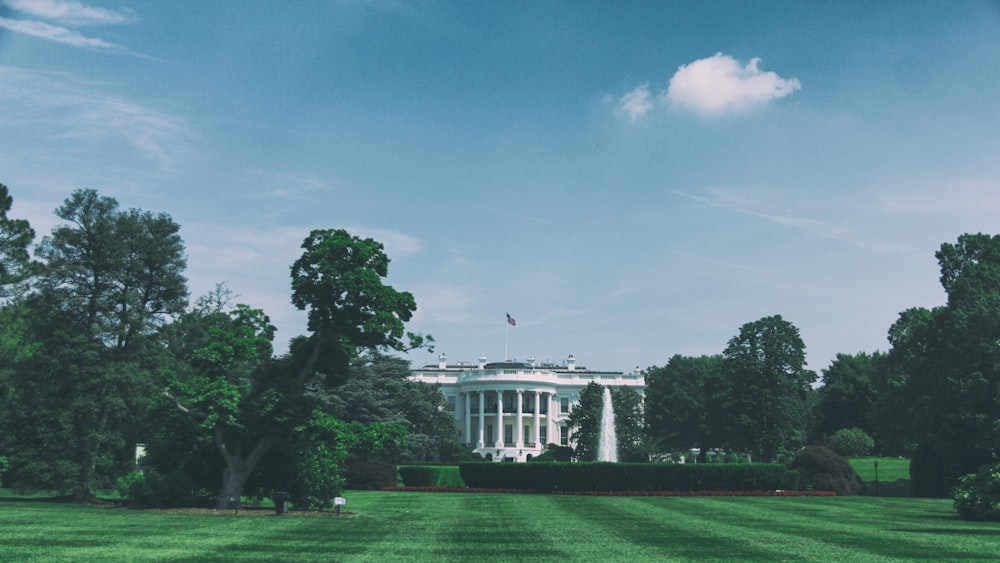Source: Unsplash
President Biden had the good fortune to take office just as the vaccines were rolling out and the economy was poised for a strong recovery, but he is squandering the opportunity to make the investments necessary to boost longer-term growth.
Economists outside the administration and some within are critical that his $1.9 trillion stimulus package is beyond what is prudent. It won’t address the plight of the 10 million workers permanently unemployed and inequality imposed by pandemic-induced, permanent changes in where we work and what we buy.
COVID-19 spending pushed the federal deficit to $3.1 trillion in 2020 from $1 trillion in 2019. Most of that debt was not financed by the Treasury selling bonds to the public but rather by printing money. Along with other programs to pump credit into the economy, the Federal Reserve’s balance sheet expanded $3.2 trillion, and that kept interest rates on 10-year Treasuries below 1% — those provide the benchmark for long-term debt in the private sector.
Healthy corporations were hesitant to invest and bulked up cash hoards, while weaker companies went on a borrowing binge. Investors hungry for yield jumped into junk bonds, and that leaves many firms — otherwise expected to travel through bankruptcy — heavily in debt but still functioning.
Similar things happened in the housing market. It is extraordinary that housing prices jumped 13% as the economy permanently shed 10 million jobs. Simply, mortgage brokers and banks were able to offer rock bottom interest rates to home buyers fleeing unsafe cities.
Also, the Fed intervention kept most states and municipal borrowing rates reasonable.
As the economy recovers, Treasury Secretary Janet Yellen and Federal Reserve Chairman Jerome Powell assure us the Fed has the tools to handle what inflation above 2% may emerge but that is terribly optimistic.
The Fed could reduce bond purchases to raise the Treasury benchmark enough to create positive inflation-adjusted yields for investors in corporate, mortgage, and state and municipal bonds. Those rates could easily jump enough to run havoc through the finances of airlines and other businesses that don’t expect demand to fully recover, thanks to post-pandemic changes in corporate and consumer spending patterns. And undermine a housing market whose prices have far outrun family incomes and create new fiscal crises for New York, Chicago, and other progressive cities.
Households and businesses will be spending more robustly but supply constraints have already emerged. Automakers face shortages of chips and tight supplies for batteries to power new EVs. They are emphasizing higher-priced models. Many businesses are challenged to find enough skilled workers.
Consumer product companies are enjoying more pricing power and as the economy accelerates this spring and summer, the Fed can’t merely break the pace of demand a bit to temper inflation as inflation accelerates.
Even though high transactions costs and cumbersome IRS reporting rules make Bitcoin terribly impractical for most everyday purchases, its value is booming, because it is widely advertised as an inflation hedge against central bank promiscuity, and long-term inflation expectations are rising.
Coming at a time when mortgage payment and rent moratoriums will be phasing out, higher interest rates would send unemployment and evictions to socially unacceptable levels just one year after protesters on the left brought riots and a breakdown in civil order to major cities and six months after protesters on the right stormed the Capitol.
Higher interest rates could easily become for our generation what the tea tax was for colonial Boston or the Salt Tax in the French Revolution.
President Biden’s stimulus package will provide the bonds for the Fed to purchase — with the $1.9 trillion stimulus package the deficit could be even higher this year than in 2020. But that’s before his promised packages to rebuild infrastructure, address labor force training issues and bolster R&D to transition to a greener economy and effectively compete with China — all necessary to raise long-term growth above 2% and reduce inequality.
He could try to raise taxes to finance his agenda, but what the Keynesians in the White House won’t admit is that new taxes on the scale necessary to finance Mr. Biden’s agenda would be just as damaging to the economy and social peace as higher interest rates.
He will have to borrow, print money, and risk hyperinflation.
Mr. Biden will get his $1.9 trillion stimulus package, but like a young man who squandered his inheritance on foreign travel and high living, he will stew in his regrets when the expenses for creating a sustainable, prosperous future arrive.




